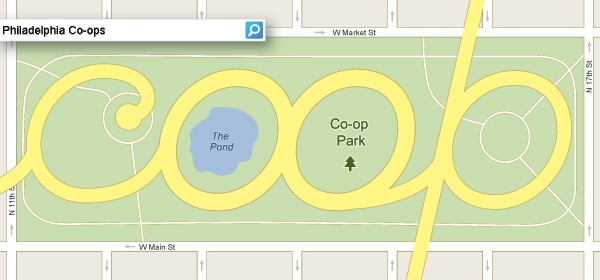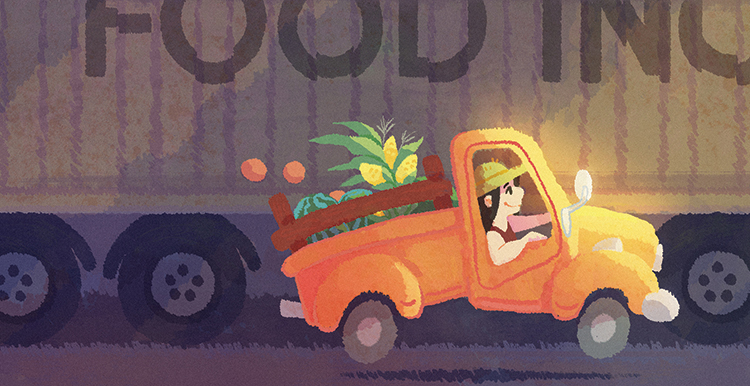 story by Samantha Drake Any doubt that the Philadelphia region has a thriving alternative economy, complete with cooperatives of all kinds, can be answered by a look at the map created by Craig Borowiak, political science professor at Haverford College.
story by Samantha Drake Any doubt that the Philadelphia region has a thriving alternative economy, complete with cooperatives of all kinds, can be answered by a look at the map created by Craig Borowiak, political science professor at Haverford College.
The Philadelphia Mapping Project illustrates the evolving “solidarity economy,” which, according to Borowiak, includes “economic activities that prioritize relationships of reciprocity, democratic participation and community needs.” Perhaps the most prominent co-op in the region is Weavers Way Co-op, with locations in Chestnut Hill and Mount Airy and more than 4,900 member households. But Weavers Way isn’t alone. Philadelphia has dozens of childcare and preschool co-ops, artist co-ops, community development organizations, community land trusts, community gardens, credit unions, food co-ops, housing co-ops and other organizations.
The map was created using Google Maps and Google Earth software, but Borowiak hopes to shift to an open-source platform to allow community input. Efforts are also underway to make the map more interactive, allowing organizations to get directly involved and make the map searchable. The map is intended to help consumers find solidarity economy producers, create supply chains and spur social networking.
The map’s web page went live in September 2010 with the help of Cameron Scherer, a 2011 political science graduate of Haverford, and since then has become a resource for researchers, academics and local governments. Borowiak launched the project primarily to raise awareness of alternative economies that exist largely under the radar. “I was surprised by how many activities fit in our parameters,” he says. “There is a lot going on.”
Learn more about the solidarity economy project and view the interactive map at haverford.edu/politicalscience/solidarityeconomy/mapping/philadelphia.php.



